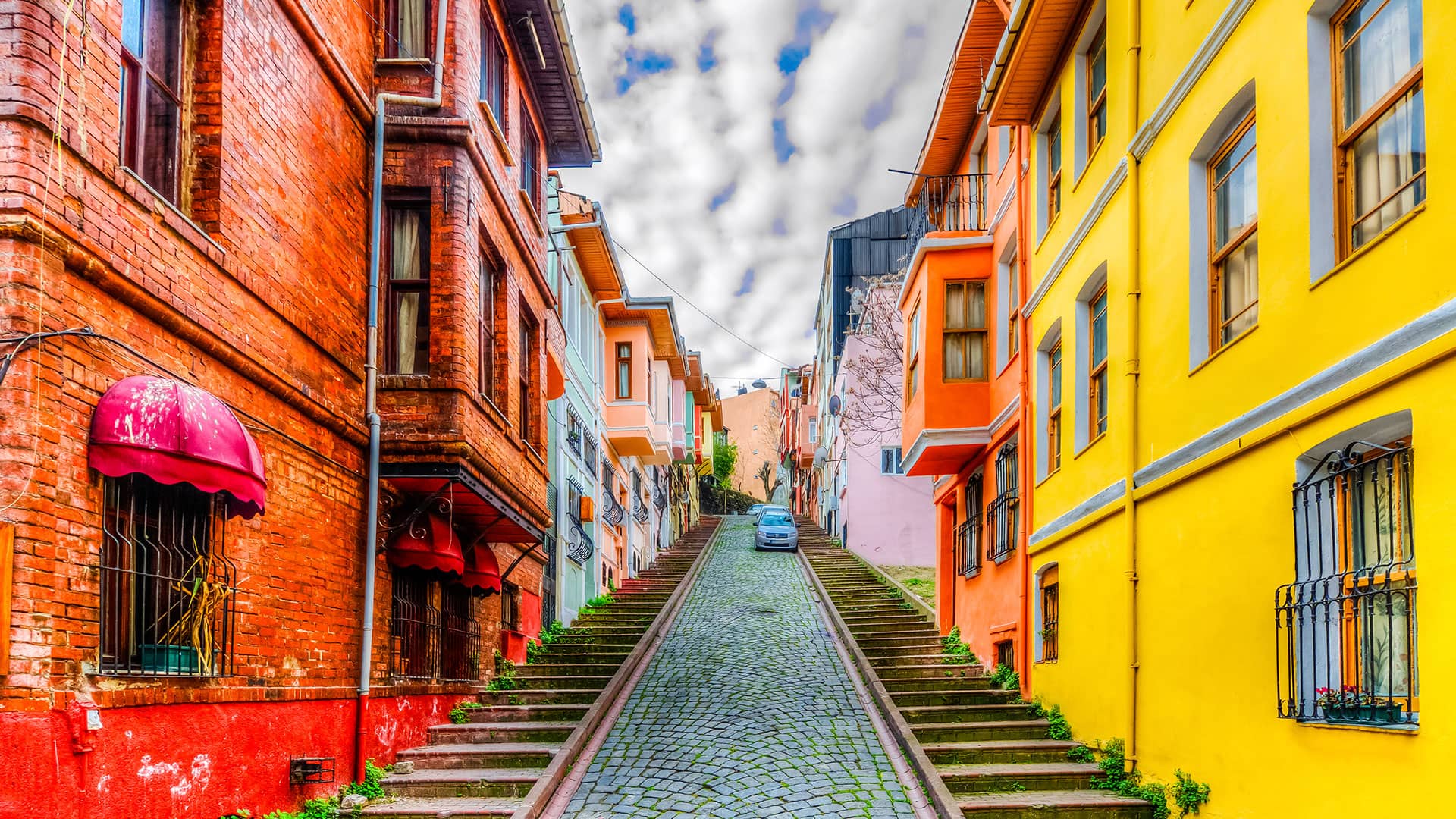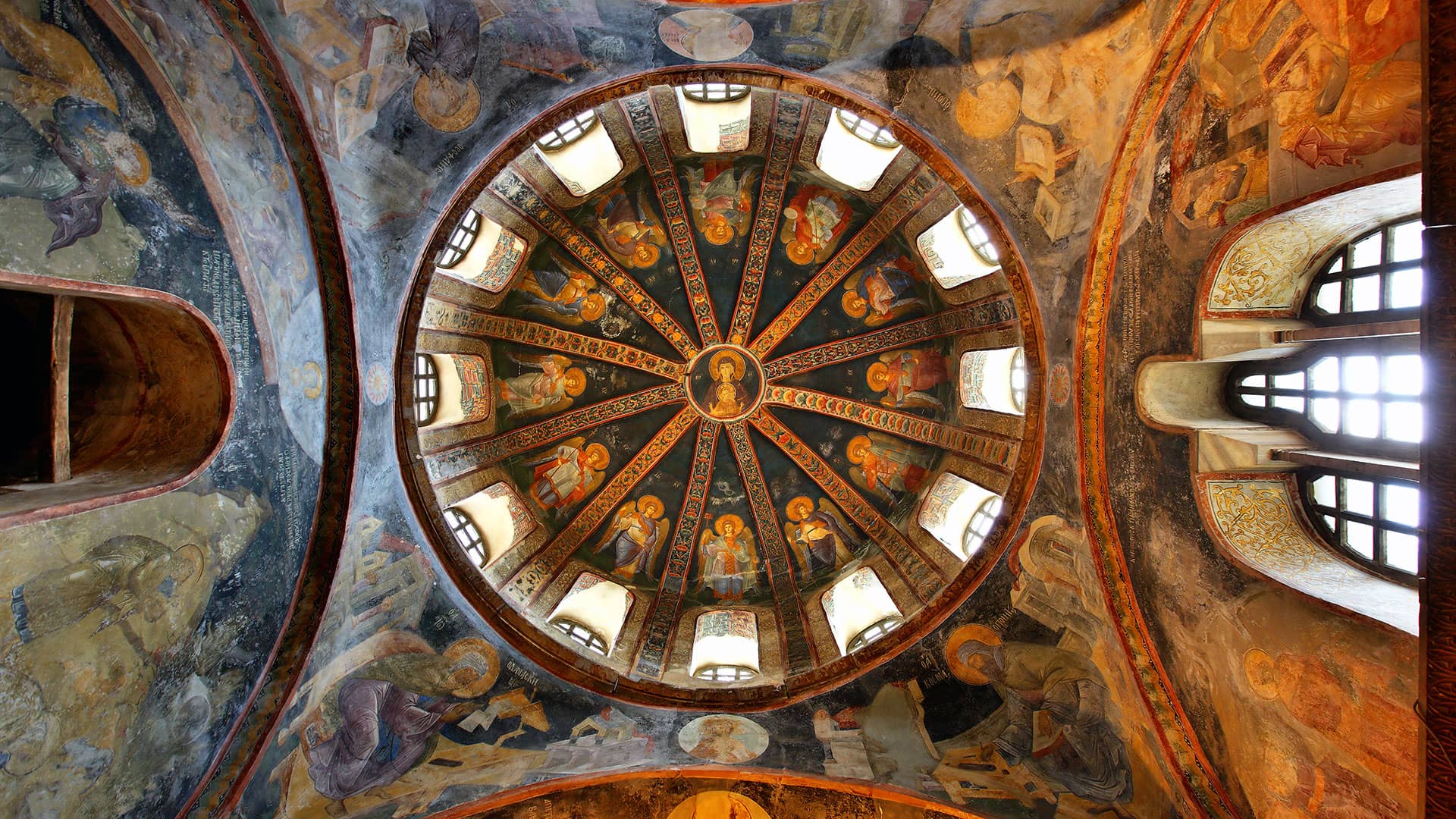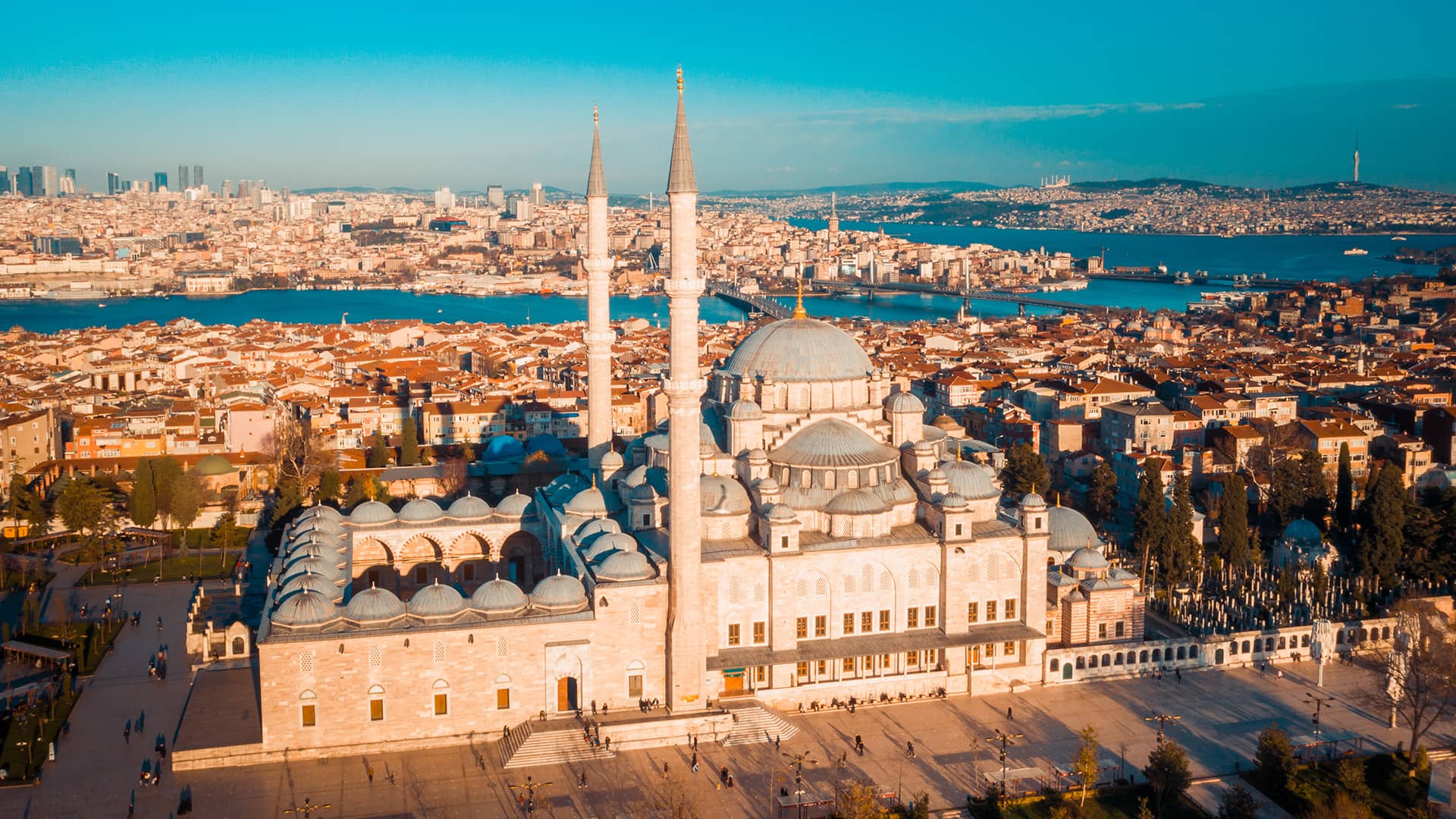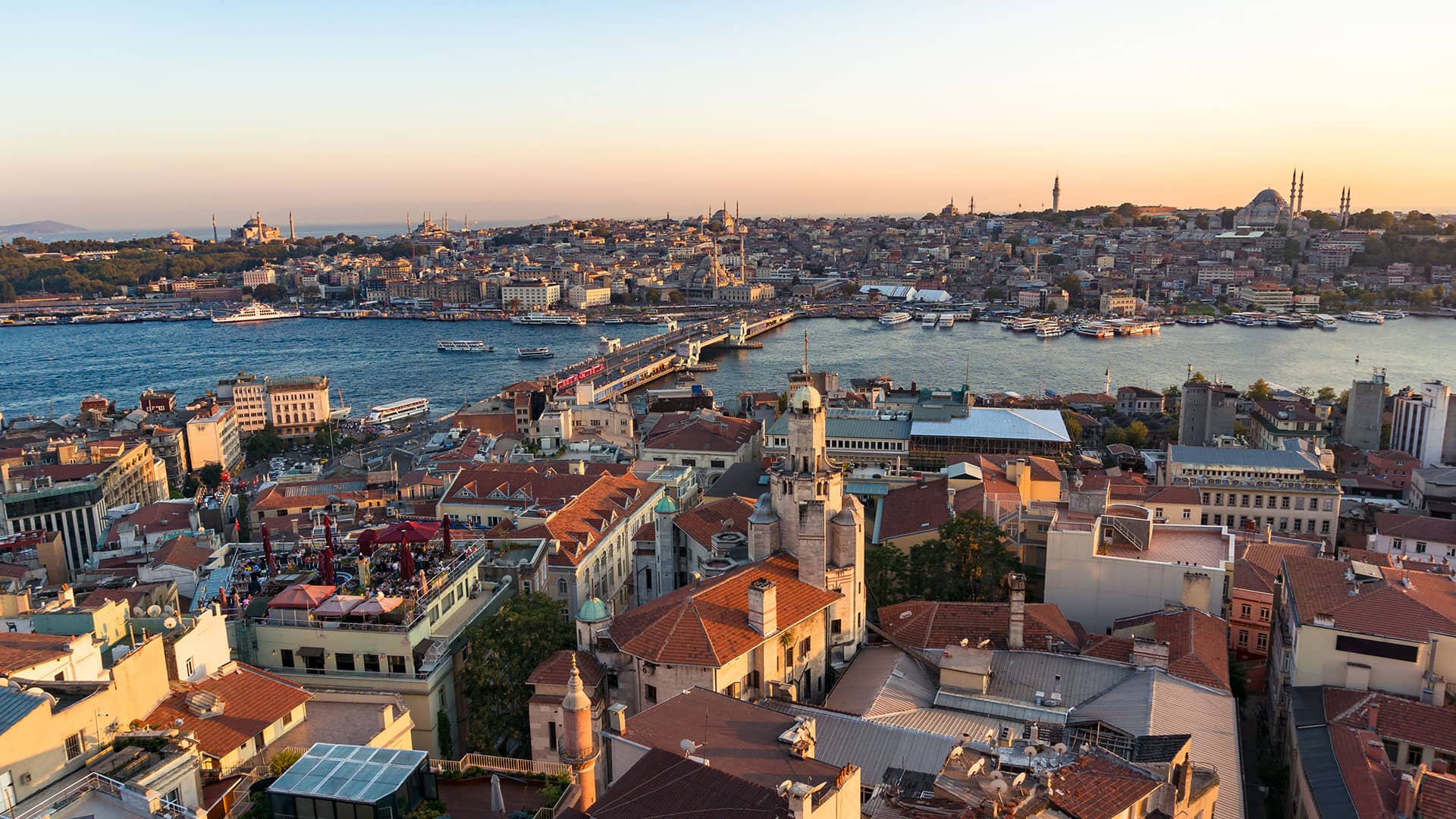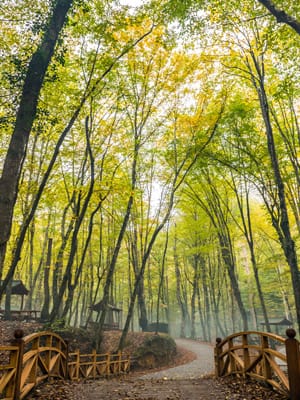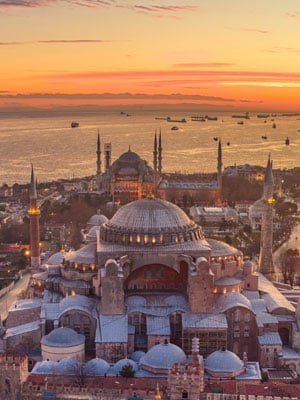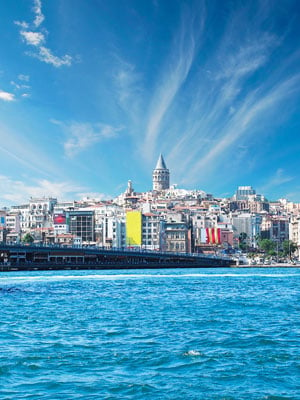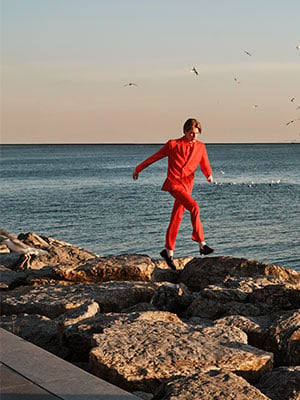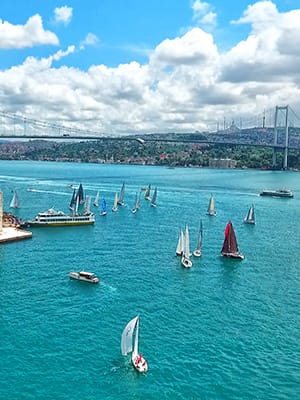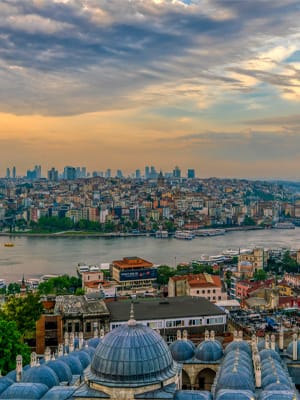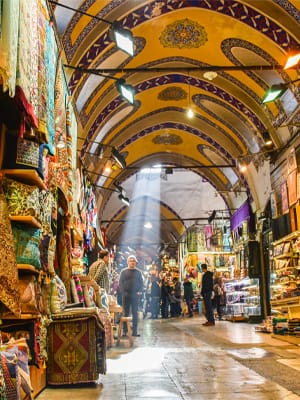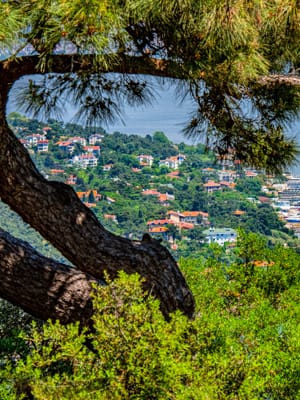

experiences
The Neighbourhoods of Faith
Along the Golden Horn, you may be asked if you have heard of the Neighbourhoods of Faith. They consist of the Fatih, Fener, and Balat neighbourhoods, where different religions and communities live in harmony, creating a cultural melting pot of diversity, rich history, culinary influences, and unique local charm.
If you are a fan of intriguing places off the beaten track, you should definitely visit these neighbourhoods. Let us start with the Fatih district, one of İstanbul’s more conservative neighbourhoods with a strong Muslim influence.
The Grandeur and Serenity of the Fatih Mosque, one of the largest religious buildings in İstanbul, was the first large imperial mosque to be built after the conquest. Commissioned by Mehmet the Conqueror, the mosque was built on the hill of the destroyed Church of the Apostles, the burial place of Constantine and other Eastern Roman emperors. Over the years, the mosque has been through turbulent times. The original structure stood for almost 300 years before it was destroyed in an earthquake in 1766 and then subsequently rebuilt.
However, the original and ornate courtyard galleries, portals, and tombs still remain. Wednesdays are the best time to visit, as this is when İstanbul’s largest street market Fatih Pazarı takes place around the mosque.
The Magnificence of the Süleymaniye Mosque, stands out as it is perched on the Third Hill, it is an amazing sight as it pierces the İstanbul skyline and is one of the largest mosques in the city. Nestled in the incredible landscape of the Golden Horn, the mosque is surrounded by a sprawling courtyard, with the stunning interplay of ash-coloured domes and minarets only adding to its religious grandeur. The interior of the mosque is equally magnificent: plush carpets, magnificent chandeliers, luminous stained glass windows, and an ornately tiled mihrab dazzles visitors with their ceaseless architectural perfection.
Süleyman - and his genius architect Mimar Sinan - tried to rival the spaciousness of the Ayasofya Mosque by hiding the massive buttresses supporting the dome, integrating the buttresses into the walls, and adding rows of monolithic porphyry columns under the tympanums on either side. Although not as large as the Ayasofya, the Süleymaniye surpasses it in terms of light and openness.
The most distinctive feature of the mosque is the bright red and white striped archways, which add a touch of elegance to the interior of the mosque with their subtlety and symmetry. In front of the mosque are manicured lawns with fountains and flowerbeds, as well as the sublime tombs of the sultan’s wife and the sultan himself. The Süleymaniye Mosque, which watches over a sea of wood-clad Ottoman houses that thrive at its feet, is one of the most exemplary works of art in İstanbul.
Onwards to the Fener district, is the Christian centre of İstanbul. It has remained the city’s main Christian Orthodox quarter since the 1600s. Stroll through the winding streets and alleys you will eventually come across St George’s Church, which is the most important Orthodox cathedral in İstanbul. Timing is everything as it is only open to visitors for a short time. The church, dedicated to St George, a Christian martyr. The church is frequently visited by Orthodox pilgrims. One of the most striking features of the church is its interior, which is beautifully decorated in the Orthodox style.
This is the seat of the Ecumenical Patriarchate of Constantinople (Patriarchate of the Orthodox Church). It is a beautiful place to pray and light a candle, no matter what religion you belong to.
Be sure to check out the Orthodox High School. This red imposing building overlooks the entire neighbourhood and was founded back in 1454. The school used to cater to the children of prominent families of the Ottoman Empire.
The Church of Saint Mary of the Mongols will certainly grab your attention. Although it is not open to the public, you should admire the red exterior that earned it the nickname ‘Bloody Church’. This beautiful building is an Orthodox church and has an interesting history. It is perhaps the only church from the Eastern Roman era of İstanbul that has not been converted into a mosque. The church is hidden behind high walls and has beautiful architecture. It is also famous for housing the tombs of many saints and famous men from history.
Finally, we come to the Balat district, the historic Jewish quarter that survived the Eastern Roman and Ottoman periods. Most left it after the earthquake of 1894 and moved to Israel, Galata, or Şişli. However, there are still remnants of the history of this neighbourhood.
One of İstanbul’s oldest religious buildings, the Ahrida Synagogue, has a rich heritage. Built by Romaniots, the synagogue has an interesting history that demonstrates its impact on religion. The synagogue has an interesting boat-shaped tevah.
Against a majestic backdrop of distant hills and wood-clad houses rises the magnificent Chora Church, a fourth-century relic. A moving escape into the historical and religious nuances of the land, the church was remodelled in subsequent centuries, only to be converted into a mosque and later became the Kariye Museum. The church museum, located within the sturdy Theodosian walls, is a rich - and often startling trove of Eastern Roman artwork. The museum is divided into various sections, each with its own unique charm. The unusual design of the building consists of a series of domes, numerous windows and arches that reflect the beautiful quintessence of its historical architecture. The museum is most notable for its abundance of mosaics, frescoes and mediaeval paintings that provide a vivid insight into the Old Testament. The iconic Chora Church is a remarkable and understated jewel of faith.

